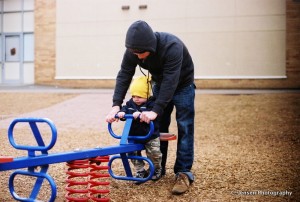Well, I’ve been waiting for my books to come in, and all but one arrived today! I have a lot of good resources to study during the next 10 weeks, and am excited to begin. I will prepare at least one post a week, and relate my studies to children in domestic space. It is my hope that this blog will be of use to those with children, who are working with children or who want to know more on the subject.

Cover of “Planning Environments for Young Children Physical Space”, by Sybil Kritchevsky and Elizabeth Prescott with Lee Walling
This last week I read “Planning Environments for Young Children Physical Space“. This reading is based on a 3 year study funded by the U.S. Children’s Bureau in 1967, based on the effect that physical space has on children – primarily in classroom and daycare settings. I want to discuss how the information in this research can be of benefit to a parent or caretaker in domestic space, as I found it beneficial.
Much of the world around us is set up for adults, and even we take cues from our surroundings that tell us how to behave, act, dress, talk, etc. For example, most of us would act different in an informal family room with friends than we would at a formal dinner. In a similar way, children are affected by their surroundings. In setting up efficient children’s spaces the desired outcome should be established, then create an environment to meet the desired goal.
In establishing goals, a classroom at school will look a lot different than a playroom in your home – and for good reasons. Are the children expected to sit and pay attention for periods of time? Are you encouraging them to have independent play for extended periods? The following information should help to establish what kinds of surroundings will help with behavior and development in different environments. Having the correct environment can help the caretaker to give better and more positive attention to the child, will enhance the child’s independence in independent play, encourage interaction with other children and increase attention span.
I think it’s important to understand what this study identifies as “potential units”, “play units” and the “complexity” of these units. The play units are separated into three categories: simple, complex, and super. These categories are designated by the complexity of the object.
Basically,
1. A simple unit is a toy or object that has one visibly identifiable use.
2. Complex units involve a unit with two parts, getting more complex than a simple play unit.
3. and a Super unit has 3 or more parts, the most complex and one that will hold a child’s attention the longest.
For example, a simple unit might be a seesaw, sandbox, etc. simple units can often be made more complex by adding other units to them (tools, boxes for climbing/playing in, props, water, etc.).
The higher the complexity ranking, the longer the particular unit will hold a child’s attention. While none of the units are necessarily better than the other, the more complex units typically encourage more involvement on the part of the child’s imagination, and ingenuity. In fact, super units can be made up of 3 or more simple units – and children sometimes create super units themselves.
In fact, super units can be made up of 3 or more simple units – and children sometimes create super units themselves.
A potential unit is classified simply as a space that a child can potentially use as a space. Some examples might be a small table, under stairs, a corner, and so on.
It is also important to consider the amount of children playing, and the amount of children that each unit allows. Certain units can only be used by one child (such as a swing) which can allow a child to get away and have a moment alone when needed. While it is also essential to have units which encourage socialization, where more than one child can play.
With these unit definitions, one can then think about their own space, and modify accordingly. Think about the amount of time expected of the child to play in a certain space. (Are you are wanting to promote outdoor play, or is it cold outside and would like them to stay inside?). Let’s say that you are wanting to promote your child to play outdoors for a long period of time, you would want to supply them with more super units, along with a few complex and simple units.
A common misstep that was observed in this study, was the physical space put together for young children (around 2 years old). In this study it was normally observed that play spaces for children in this age group were made up of many simple units, and no complex or super play units. Because of this, their attention was very short lived, which made them prone to boredom, relying on their caretakers to guide them to another activity, and were more likely to fight over toys. This kind of set up also has a strong affect on the caretaker, as they are more stressed. When the environment supports independent play, and interaction the caretakers are in a better state to care for the children. According to this study, this situation can be avoided by simply adding more complex and super units. This is a good example of how having a good environment, with the necessary play units and potential units supports attention span development, independence, and positive socialization.
Overall, this study sparked thinking about our environments, especially children’s environments and how they can be affected by them in a developmental stance. By exposing them to more complex environments, that stimulate their own brilliance and creativity can ease the stress of the caretaker, while greatly enhancing their own development.
